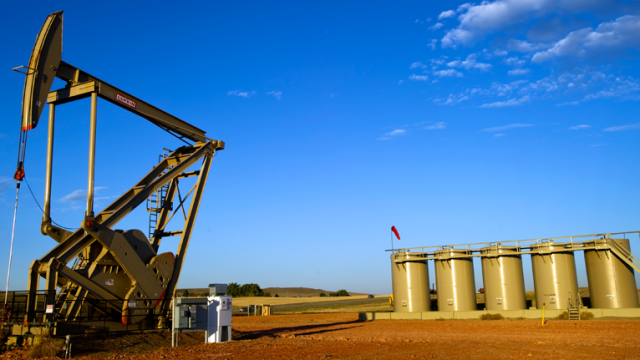Analysis: What If North Dakota Had Gone To A Flat Oil Tax?

The big news of the week was, without a doubt, the new revenue forecast for the state of North Dakota which showed oil tax revenues declining by more than half from a forecast done just a few months ago in December. One lawmaker described it to me as the most important day of the session.
The ugly revenue report doesn’t mean the sky is falling. The state will still be taking in a lot more revenue than just a few budget cycles ago, and there are billions tucked away in trust funds which could be used in an emergency. Still, a multi-billion swing in forecasted revenues over the course of just a few months is a headache no state should want.
Now, I’ve been very critical of the state’s byzantine oil tax structure as a culprit in this uncertainty. The current extraction tax is tied in multiple ways to oil prices, which creates a huge amount of uncertainty both for the state and the oil industry when it comes to revenues and tax rates. Previous efforts to replace this tax code abomination with a flat tax in 2013 and 2011 were, unfortunately, defeated by lawmakers who didn’t want to appear too friendly to “big oil.”
But what if those efforts had been successful? What would the revenue picture be then? And what if the state oil producers weren’t saddled with such a large discount for their product thanks to an infrastructure bottleneck and the national ban on exporting crude oil?
Last night I went over some of the numbers with a consultant who works in western North Dakota (and preferred not to be identified given the politically sensitive nature of his work), and they’re pretty interesting. You can see the raw numbers here, but below is a graph showing some different scenarios.
The blue bars are forecasted revenues under the current tax code, plus various flat tax rates, assuming the same 15 percent discount for North Dakota crude from the West Texas Intermediate price that the forecast released earlier this week used. The rest of the bars show the same tax scenarios but assuming smaller discounts.

The 8 percent range would likely be something we could enjoy if we had more pipeline infrastructure to ease the bottleneck at rail shipping, and perhaps if the United States raised the oil export ban and gave American oil producers access to more markets for their oil. Currently American refiners have a captive market since domestic oil producers for the most part cannot export their unrefined product. That’s a good deal for the refiners, but not so good for the producers.
Regardless, as you can see the flat tax makes a big difference though not as big a one as I would have expected. Using the same 15 percent discount the state used in its forecast, we see a more than $221 million shift in revenues from the current tax code to a 9.5 percent flat tax rate with no exemptions, but we’d still have a big decline from previous projections due to oil prices.
Still, this isn’t so much about maximizing revenues to the state or savings to the oil industry as its about creating a simple, predictable tax code.




